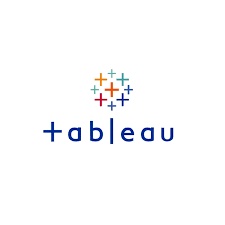Introduction
Interactive dashboards are a potent tool for conveying data-driven insights to your audience. They allow users to explore data, uncover trends, and gain actionable insights through a visually engaging experience. Tableau, a leading data visualization and business intelligence tool, is renowned for its dashboard-building capabilities. In this article, we'll guide you through the process of creating interactive dashboards with Tableau, unlocking the potential to make your data come alive.
Understanding Tableau Dashboards
In Tableau, a dashboard is a collection of views, sheets, images, and web content all brought together in one interface. It allows users to interact with the data, filter views, and discover insights in real time. In Tableau, a dashboard is a collection of views, sheets, images, and web content all brought together in one interface. It allows users to interact with the data, filter views, and discover insights in real time. To help individuals develop proficiency in creating engaging and insightful Tableau dashboards, a specialized Tableau Course is available. These courses cover a range of topics, from the fundamentals of Tableau dashboard design to advanced techniques for enhancing interactivity and user engagement. To create an effective interactive dashboard:
1. Define Your Audience and Purpose: Understand who will be using the dashboard and what specific insights or actions they require.
2. Select the Right Data Sources: Connect Tableau to your data sources, which could include spreadsheets, databases, or cloud platforms.
3. Choose the Right Visualizations: Select the most suitable chart types and graphs for your data. Bar charts, scatter plots, maps, and line charts are just a few examples.
4. Build Individual Sheets: Create individual sheets that represent different aspects of your data, ensuring they are clean and informative.
Creating an Interactive Tableau Dashboard
Step 1: Launch Tableau and Connect to Data Open Tableau and connect to your data source. You can import data directly, or use live connections to databases. Once your data source is connected, you can start building your dashboard.
Step 2: Drag and Drop Sheets In Tableau, you can drag and drop sheets onto the dashboard canvas. These sheets represent your visualizations. As you add sheets, Tableau provides options to arrange and size them.
Step 3: Add Filters and Actions Enhance interactivity by adding filters and actions. Filters allow users to adjust parameters like date ranges or categories. Actions can be set to highlight relevant information when users click on a specific data point.
Step 4: Create a Story Tableau allows you to create a story, which is a sequence of sheets or dashboards to guide users through the data story. Stories can provide context and narrative to the dashboard.
Step 5: Design and Format A well-designed dashboard is aesthetically pleasing and easy to navigate. You can format titles, captions, and legends, choose color schemes, and control the layout.
Step 6: Publish and Share Once your interactive dashboard is ready, you can publish it to Tableau Server, Tableau Online, or Tableau Public for sharing with your intended audience.
Best Practices for Interactive Dashboards
- Keep it simple: Don't overwhelm users with too much data or complex visuals.
- Ensure consistency: Use a consistent color palette, font, and labeling across your dashboard.
- Test usability: Conduct user testing to ensure your dashboard is intuitive and effective.
- Mobile responsiveness: Design dashboards that work well on both desktop and mobile devices.
- Performance optimization: Pay attention to data query and loading times to ensure a smooth user experience.
Conclusion
Creating interactive dashboards with Tableau is an art that combines data analysis, design, and storytelling. With the right approach and understanding of your audience, you can build dashboards that not only convey data but also empower users to explore and gain valuable insights. By mastering the art of data storytelling with interactive dashboards, you can drive informed decision-making and effectively communicate the impact of your data.


No comments yet